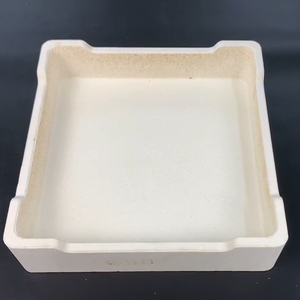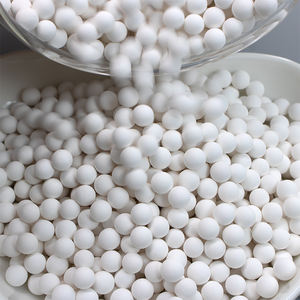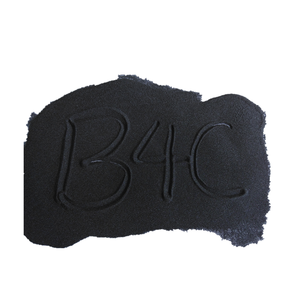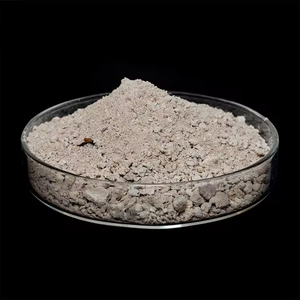Professional industry ceramic supplier, silicon nitride, silicon carbide, aluminum nitride and any other kinds of ceramics.
PRODUCT PARAMETERS
Description
Overview of Refractory Y2o3 Zro2 Cao Calcium Oxide Stabilized Zirconia Ceramic Zro2 Crucibles
Refractory Y2o3 Zro2 Cao Calcium Oxide Stabilized Zirconia Ceramic Zro2 Crucibles are non-metallic substances designed to withstand extreme temperatures exceeding 1,000°C, along with harsh chemical and physical stresses. They are essential for the inner linings of industrial furnaces, kilns, reactors, and incinerators, providing critical thermal insulation and structural integrity in processes ranging from metal and glass manufacturing to power generation.
Features of Refractory Y2o3 Zro2 Cao Calcium Oxide Stabilized Zirconia Ceramic Zro2 Crucibles
-
High-Temperature Resistance: Maintain structural strength and stability at temperatures often exceeding 1500°C.
-
Excellent Thermal Shock Resistance: Withstand rapid heating and cooling cycles without cracking or spalling.
-
Chemical Inertness: Resist corrosion and degradation from slags, molten metals, and acidic or basic environments.
-
High Mechanical Strength: Possess considerable load-bearing capacity at operating temperatures.
-
Low Thermal Conductivity: Provide effective insulation to improve energy efficiency and protect furnace structures.
-
Abrasion Resistance: Withstand erosion from solid materials and gas flows.
Specification of Refractory Y2o3 Zro2 Cao Calcium Oxide Stabilized Zirconia Ceramic Zro2 Crucibles
These crucibles are made from top-grade zirconia ceramic. The zirconia gets stabilized with calcium oxide (CaO) and yttrium oxide (Y2O3). This mix creates an incredibly tough material. These crucibles handle extreme heat exceptionally well. They withstand temperatures exceeding 1750°C. This makes them perfect for demanding high-temperature tasks.
They resist chemical attack superbly. Acids, alkalis, and molten metals don’t easily damage them. This chemical stability is a major advantage. You get reliable performance in harsh environments. Thermal shock resistance is another key feature. They cope well with fast temperature changes. This reduces cracking risk during heating or cooling cycles. It extends their usable life.
Mechanical strength is high. These crucibles are hard and resist wear. They maintain shape under heavy loads. This durability is crucial for industrial use. The material purity is consistently high. Low impurity levels ensure minimal contamination. Your melts stay cleaner. This is vital for precise material processing.
Surface finish is smooth. This helps prevent material sticking. It also makes cleaning easier between uses. Consistent quality is standard. Manufacturing controls ensure every crucible meets strict specs. You get dependable performance batch after batch.
These crucibles work well in furnaces and kilns. They are ideal for melting metals like platinum, palladium, and special alloys. They suit glass frit production and advanced ceramic sintering. They are also used in chemical analysis requiring pure melts. Their toughness supports demanding research and production. They offer a long service life under tough conditions.
Applications of Refractory Y2o3 Zro2 Cao Calcium Oxide Stabilized Zirconia Ceramic Zro2 Crucibles
Refractory Y2O3 ZrO2 CaO stabilized zirconia ceramic crucibles are tough. They handle extreme heat very well. These crucibles resist temperatures far above 2000°C. This makes them good for melting things needing high heat.
They are also very stable chemically. Acids and bases don’t easily damage them. This inertness is important. It stops the crucible material from getting into your melt. It also stops the melt from reacting with the crucible itself. Your sample stays pure.
Another key point is thermal shock resistance. These crucibles cope with fast temperature changes. They heat up or cool down quickly without cracking. This is useful for many processes. You don’t always need super slow heating or cooling cycles.
Because of these properties, these crucibles are used in several demanding areas. Melting precious metals like gold, platinum, and their alloys is common. These metals need high purity. The crucible’s inertness protects the metal quality.
They are also good for processing reactive metals. Think titanium, zirconium, or rare earth elements. These metals react strongly with many materials. The zirconia crucible provides a stable container. It minimizes contamination.
Handling corrosive materials is another major use. This includes strong fluxes, special glasses, and certain chemical compounds. The crucible material stands up to the attack. It lasts longer than other options might. This saves money and downtime.
These crucibles offer reliable performance in tough conditions. Their strength, heat resistance, and chemical stability make them practical. They are a solid choice for high-temperature work demanding purity.
Company Profile
Tanki New Materials Co.Ltd. focus on the research and development, production and sales of ceramic products, serving the electronics, ceramics, chemical and other industries. Since its establishment in 2015, the company has been committed to providing customers with the best products and services, and has become a leader in the industry through continuous technological innovation and strict quality management.
Our products includes but not limited to Aerogel, Aluminum Nitride, Aluminum Oxide, Boron Carbide, Boron Nitride, Ceramic Crucible, Ceramic Fiber, Quartz Product, Refractory Material, Silicon Carbide, Silicon Nitride, ect. please feel free to contact us.

Payment Methods
T/T, Western Union, Paypal, Credit Card etc.
Shipment Methods
By air, by sea, by express, as customers request.
5 FAQs of Refractory Y2o3 Zro2 Cao Calcium Oxide Stabilized Zirconia Ceramic Zro2 Crucibles
These crucibles handle extreme heat. They’re made from zirconia ceramic. This ceramic gets stabilized with yttria and calcium oxide. This mix creates a tough material. It withstands very high temperatures well. It resists chemical attack strongly. It also handles thermal shock reliably. Here are common questions:
What makes these zirconia crucibles special? The key is the material. We use zirconia stabilized with both yttria and calcium oxide. This specific combination boosts strength significantly. It improves thermal shock resistance too. It keeps the structure stable under intense heat. This is vital for melting metals or processing minerals.
How hot can these crucibles get? Their maximum continuous use temperature is high. They reliably operate up to 2200°C. This depends on the exact atmosphere. They resist melting or deforming at these extremes. This makes them perfect for demanding furnace work. They are common in labs and industry.
Why do they resist thermal shock? The material structure helps a lot. It manages rapid temperature changes effectively. The crucible won’t crack easily going from hot to cold. This is critical for repeated heating and cooling cycles. It prevents sudden failure. Your process stays reliable.
What chemicals attack them? They resist most acids and bases well. They handle molten metals reliably. Strong alkalis can cause some damage over time. Hydrofluoric acid is a major problem. Avoid it completely. Check chemical compatibility for your specific materials. Safety is important.
How should I handle and store them? Be careful. They are strong but brittle. Avoid impacts or drops. Store them in a dry place. Keep them away from moisture. Don’t stack them directly. Use padding between crucibles. Handle them gently every time. This prevents chips and cracks.
REQUEST A QUOTE
RELATED PRODUCTS

Refractory Material Fire Clay Brick SK30 SK32 SK34 Yellow Alumina Fire Resistant Clay Brick Kiln

High Performance Diamond Honeycomb Ceramic Burner Plate For Heater – Cordierite Gas Refractory Brick

1260 Alumina Silicate Heat Insulation Refractory Ceramic Fiber Board Top Performance Building Material Ceramic Plate

Refractory Custom Alumina Ceramic Crucible Sagger Tray For High Temperature Furnace

Ample Supply Electrical Steatite Ceramic Terminal Block Connector Ceramic Parts For Refractory Applications



